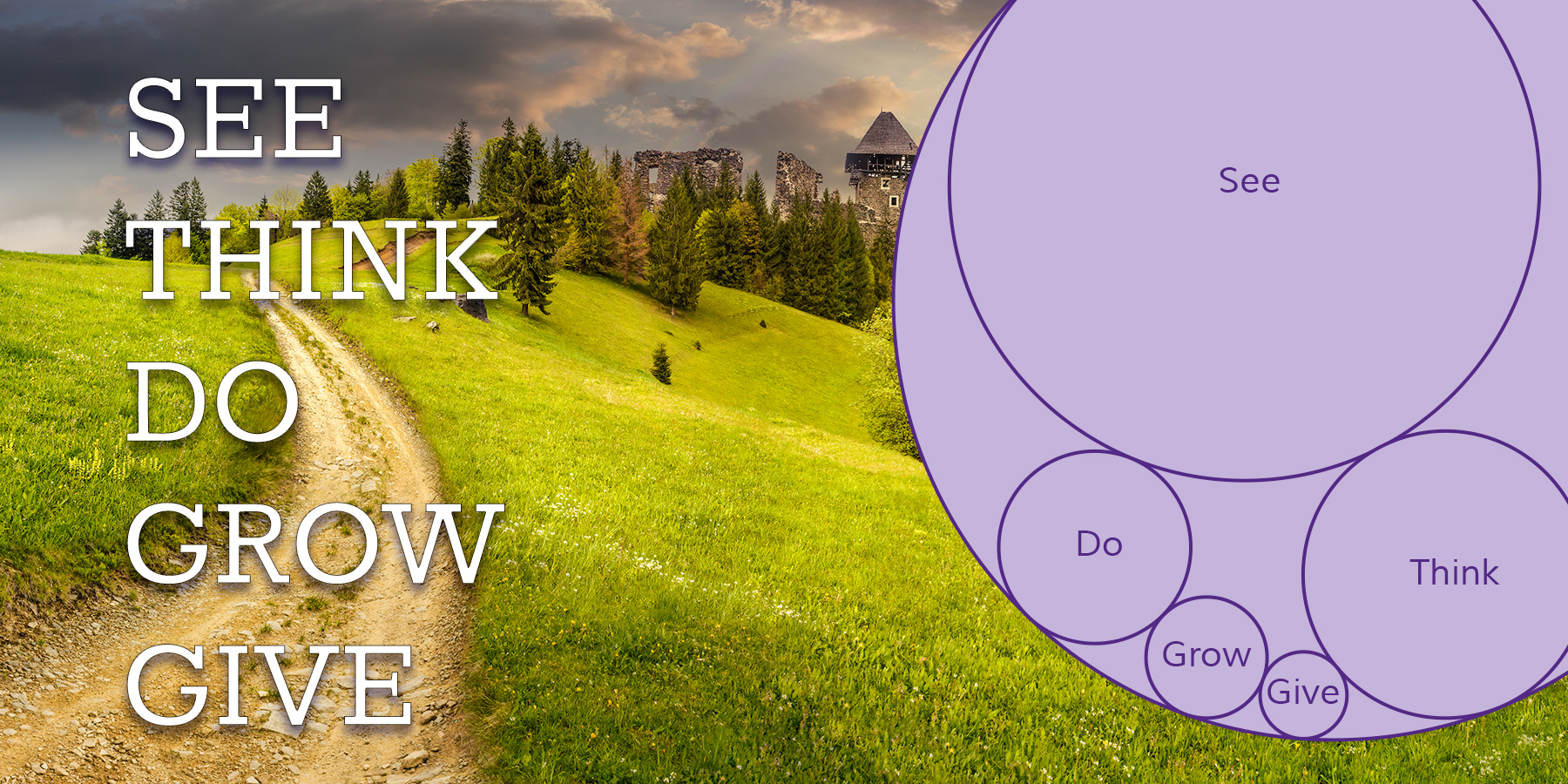
See-Think-Do is a marketing framework consisting of a series of “consideration states,” conceived by Avinash Kaushik. Because it is customer-centric and aligns well with the Iterative Marketing methodology, we refer to it often. Let’s summarize Kaushik’s main ideas and expand on them to make this framework even more powerful.
The first three considerations states, “See,” “Think” and “Do,” are the states of being of your target audience. Every member of your audience is in one of these three states right now. Your job as a marketer is to figure out which one, and deliver the right message the right way for the state they are in. If you succeed, your message will be received and relevant. If you fail, you will at best waste your resources and at worst, push away the very customer you hope to acquire.
Let’s define what puts a member of our target audience in each of these states:
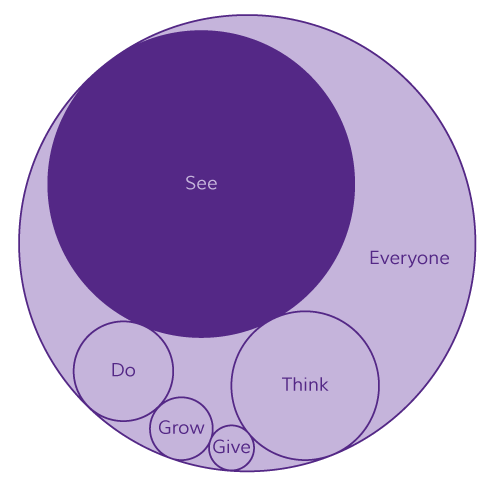
See
The audience member is qualified, BUT they are not even thinking about purchasing your product or service or changing vendors. They key here is that they are qualified, meaning they align with your brand and have a use for your product or service at some point in the foreseeable future.
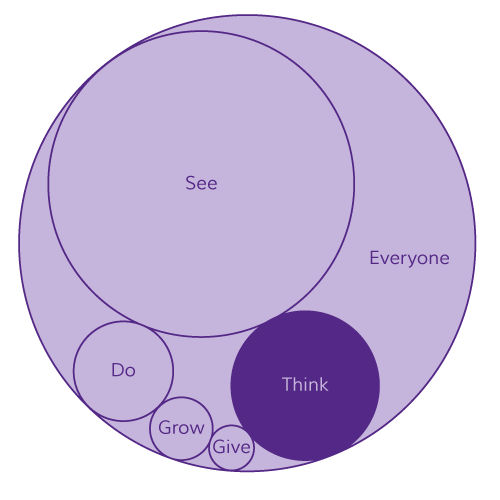
Think
The audience member is qualified AND they are thinking about purchasing your product or service or changing vendors, BUT they don’t have any timeline or commitment to do so.
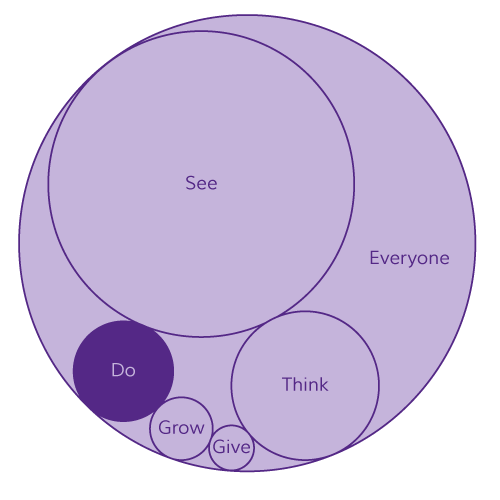
Do
The audience member is qualified AND they have made a commitment to themselves or someone else to purchase within a specific period of time.
Let’s put this in the context of a dentist:

See
The person has teeth, not thinking about dentists.

Think
The person has teeth and recently moved too far to visit their prior dentist.

Do
The person has teeth, recently moved too far to visit their prior dentist and they have a toothache.
Or a B2B SaaS product:

See
The person makes software buying decisions for the company and has budgets right-sized for the product, but not considering any changes.

Think
The person makes software buying decisions for the company, has budgets right-sized for the product and is planning to invest in the company’s infrastructure sometime in the next budget cycle.

Do
The person makes software buying decisions for the company, has budgets right-sized for the product and has made a commitment to the CEO to replace the ERP system with a more efficient one by Q2 of next year.
It’s important to note that these states are not necessarily linear. People move in and out of different states as priorities change and they interact with different products and providers.
Extending See-Think-Do to Current Customers with “Grow” and “Give”
For current customers, Avinash suggests a fourth consideration stage he calls “Care” (originally called “Coddle” and later renamed). However, based on my experience, there are actually two distinct states for existing customers. I call them “Grow” and “Give.”
The two states differ based on the customer’s attitude toward the company:
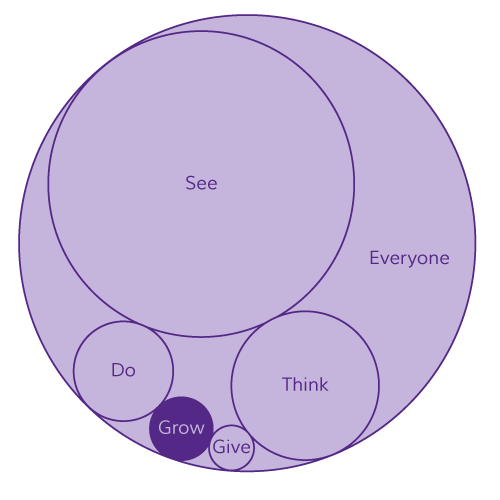
Grow
The audience member is a happy and loyal customer.
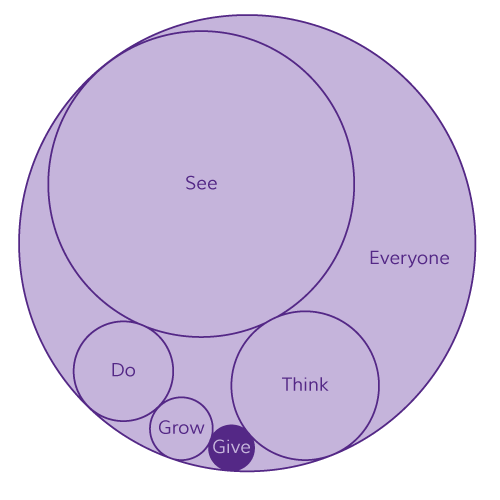
Give
The audience member is a happy and loyal customer AND they believe in your company and its mission so much they would refer a friend or family member.
Word-of-mouth marketing is a very important, yet elusive marketing channel for marketers. Separating these two states makes measuring and optimizing word-of-mouth much easier. If we track the number of customers in the “Give” state, we can keep a finger on the pulse of our potential word-of-mouth resources.
By strategically pushing the right messages to the “Give” audience, we can mobilize that resource and test what triggers motivate them most to promote our organization. The key is to focus these messages primarily on the “Give” audience, and not the “Grow” audience. Just as someone who is not in “Do” will be turned off by a sales message, someone who is not in “Give” will be turned off if asked to refer, promote, review or otherwise help your organization.
Finally, we can work toward strengthening the relationship with our “Grow” and “Give” audiences in slightly different ways. Since we know that the “Give” audience has already bought in, we can focus on making them feel exclusive and supporting their position as an advocate while cross-promoting services or subtly upselling. Meanwhile, we can focus on value with the “Grow” audience, nurturing their relationship until we know for a fact they are part of “Give.”
You’ll want to keep an eye on net promoter (NPS) scores and referral sources to determine who is in your “Grow” versus your “Give” audience. If a customer refers another customer, that’s a clear signal they are in “Give.” If they report an NPS value of 9 or 10 two surveys in a row, that’s also a clear indicator.
Pulling It All Together
Let’s review each of the five consideration states:

See
The audience member is qualified, BUT they are not even thinking about purchasing your product or service or changing vendors. They key here is that they are qualified, meaning they align with your brand and have a use for your product or service at some point in the foreseeable future.

Think
The audience member is qualified AND they are thinking about purchasing your product or service or changing vendors, BUT they don’t have any timeline or commitment to do so.

Do
The audience member is qualified AND they have made a commitment to themselves or someone else to purchase within a specific period of time.

Grow
The audience member is a happy and loyal customer.

Give
The audience member is a happy and loyal customer AND they believe in your company and its mission so much they would refer a friend or family member.
For each state, you will have a different challenge when it comes to:
- Creating relevant content based on the interests and needs of the audience in that state
- Using media channels and targeting methods to reach the audience efficiently (without waste) in each state
- Identifying the right metrics to measure success influencing the audience’s mind, heart or action in each state.
(login required)

Great information, thanks!!